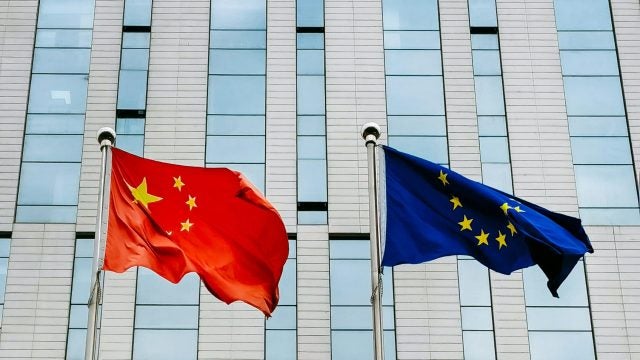
Title: Why the Economy and Not North Korea Will Be Park Geun-hye’s Biggest Challenge
In the last few months, North Korea has dominated much of the news about the Korean peninsula. With a successful satellite launch and nuclear weapons test behind it, the regime in Pyongyang has escalated its rhetoric, declared the Korean War armistice null and void, and threatened the United States with preemptive nuclear attack. With North Korea seemingly emboldened in the last month, it would be tempting to believe that the greatest challenge South Korean President Park Geun-hye faces is dealing with South Korea’s belligerent neighbor to the north. However, that may not be the case.
While North Korea may be adept at stealing the media spotlight, the bread and butter challenges facing South Korea’s economy will shape the core of Park’s agenda – jobs and welfare reform. Simply put, Park was elected to fix the economy.
Polling by the Asan Institute for Policy Studies indicates that the issue most important to South Koreans is job creation. Prior to North Korea’s third nuclear test, nearly 40 percent of South Koreans named job creation as the most important issue, with only 8 percent viewing North-South relations as a priority. Despite the test and the news coverage that has followed it; the priority placed on job creation has not changed, though support for dealing with North-South relations did rise to 15.4 percent. However, this shift has only brought North-South relations to par with other issues such as economic democratization (or chaebol reform) and wealth redistribution for the South Korean public.
Given the threats from North Korea, it might seem counterintuitive that South Koreans would place such a strong emphasis on the economy, especially since South Korea weathered the global financial crisis relatively well and was the first developed country to rebound. After seeing GDP growth fall to only 0.3 percent at the height of the crisis in 2009, it rebounded to 6.3 percent in 2010. Yet, despite the recovery and the unemployment rate only being 3.4 percent, there is a growing sense of unease about the economy with economic growth leveling off to only 2.0 percent last year.
To a degree, South Korea’s troubles are rooted in its own successes. Not only has South Korea moved from being one of the poorest countries in the world after the Korean War to one of the world’s 15 largest economies, but it is also the only country to move from an aid recipient to a member of the OECD’s Development Assistance Committee. However, the development model put in place by Park Geun-hye’s father, Park Chung-hee, has largely run its course.
Park Chung-hee pursued a development model that relied primarily on industrialization and exports for economic growth. In recent years, exports have grown to account for more than 50 percent of South Korea’s GDP. As a result, economic slowdowns in the European Union, the United States and China have created a drag on the economy.
The focus on industrialization and exports resulted in South Korea’s service sector being relatively underdeveloped compared with other developed nations. At the same time, it fostered the development of the chaebols which now dominate the economy. This has left South Korea with a services sector that is only half as productive as the manufacturing sector and increasing inequality in recent years.
It is these trends that South Koreans are reacting against. The place of the chaebols in the economy and their impact on issues such as income inequality and opportunities for other business, as well as an underdeveloped social welfare system for a country of South Korea’s level of development, are all concerns.
Addressing these concerns and rebalancing the economy will not be easy for the Park administration. High levels of household debt will inhibit efforts to increase domestic consumption and lesson dependence on exports. Additionally, South Korea faces a demographic challenge. By the end of Park’s term in office the size of South Korea’s potential workforce will have started to decline. As South Korea’s workforce ages and declines in size, the economy will need to shift to a more service oriented economy to care for the elderly while finding additional ways to increase productivity in order to maintain economic growth with a declining population.
To address these challenges, Park has called for the creation of a “creative economy” that focuses on promoting science and innovation to foster a new engine for economic growth and job creation. Park’s plan calls for the establishment of a new Ministry of Future Creation and Science to help cultivate innovation between industries such as technology and IT, where South Korea believes it has a competitive advantage.
While prior South Korean administrations have sought to spur new engines of economic growth, the economy would be better placed in the long run by encouraging innovation more broadly. While South Korea ranks 21st on the Global Innovation Index, no South Korean companies make the Forbes most recent list of the 100 most innovative companies.
Fostering innovation throughout the economy, however, will require addressing the increasingly prominent role of the chaebol. As a percentage of GDP, the top ten chaebol have grown from 53 percent of the economy in 2002 to nearly 80 percent in 2011. While the chaebol are at the heart of South Korea’s economic success, they also limit the ability of new companies to thrive. Despite ranking 8th in the World Bank’s Ease of Doing Business Report, small and medium sized enterprises (SMEs) and start ups have yet to truly take hold and prosper. This is partially due to young South Koreans who still have a preference for safe jobs at a chaebol rather than for engaging in the risks of a start up.
Improving the prospects for SMEs will largely depend on improving the competitiveness of the services sector. Prior administrations have taken steps to address the competitiveness issue by opening the sector to foreign competition through free trade agreements with the United States and the European Union. Park has called for creating more space for small and medium sized businesses to grow by not only addressing unfair competitive practices with the chaebol but also providing assistance for SME R&D and removing disincentives for medium firms to continue growing.
However, there have also previously been efforts to wall off certain industries for SMEs. Rather than trying to carve out niches for SMEs separate from the chaebol, continuing to liberalize services would increase their productivity domestically and their competitiveness internationally. Additionally, allowing for a stronger won would help to promote domestic consumption and remove some of the bias in the economy towards exports.
South Korea’s economic woes are deeply tied to its increasingly severe socioeconomical problems. Social spending in South Korea is about half of the level of the OECD average. Economic inequality has been increasing: the most recent data shows a rise in poverty in recent years, with 15 percent of Koreans now living below the level of median income.
In a society where the family traditionally took care of the elderly, the shift to a modern industrial society has been wrenching. Nearly 1 in 2 seniors live in relative poverty, the highest percentage in the OECD. The number of Koreans over the age of 65 who commit suicide has quadrupled in recent years, as many elderly find themselves without family support and ineligible for government support.
Women also face greater challenges in South Korea’s traditionally male dominated society. Despite similar or better educational attainment levels to men, the percentage of women in the workforce has not changed much in the last two decades. Only 10 percent of women are in managerial positions, in contrast to the OECD average of a third, and South Korea has the highest gender pay gap among OECD countries at 39 percent.
Data from the World Economic Forum’s Global Gender Gap Report rates South Korea as having the largest gender gap in the developed world, ranking 108 out of 135 countries. South Korea does especially poorly in the World Economic Forum’s rankings for economic participation and opportunity (ranking 116).
Addressing the issue of gender inequality is a challenge not only for women’s rights but also the economy. By increasing the participation of women in the labor force, South Korea can begin to tackle the issue of a declining labor force, if only to a degree. Additionally, because South Korean women are highly educated, the economy would further benefit from their skills and talents.
However, integrating women more fully into the workforce is a long term project. Beyond changing a male dominated culture, it will require the provision of services, such as child care, that will help to make it easier for women to stay in the workforce after having children. Park’s first budget included funding for free childcare for children of single family homes under the age of five, and she has pledged to provide incentives for employers to increase the number of women in management. South Korea will also need to reverse disincentives. Once a woman marries and has children, the pay gap tends to grow creating a disincentive to work.
While North Korea’s provocations are serious and require immediate attention, the focus of Park’s term will be the economy. Only by working to address the challenges of economic reform, income inequality and gender inequality will Park be able to put the South Korean economy on a sustainable foothold that will allow it to continue to prosper in the future.
Image Credit: Korea.net / Korean Culture and Information Service (Photographer name), CC BY-SA 2.0 <https://creativecommons.org/licenses/by-sa/2.0>, via Wikimedia Commons
This is an archived article. While every effort is made to conserve hyperlinks and information, GJIA’s archived content sources online content between 2011 – 2019 which may no longer be accessible or correct.
More News

This article contends that South Africa’s 2025 G20 presidency presents a critical opening to shape governance of critical mineral supply chains, essential for renewable energy, digital economies, and national…

Germany’s economy is being throttled by a more competitive China that has usurped its previous manufacturing dominance in many industries. In response, Germany has doubled down on the China bet…

In 2021, the European Union (EU) attempted to assert itself in the Indo-Pacific arena to increase its geopolitical relevance by releasing an ambitious and multifaceted Indo-Pacific Strategy. However, findings from…